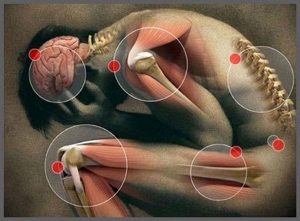Atrial Fibrillation Awareness Week
Don’t let a stroke be your first warning:
Let our pharmacists at Fresh Therapeutics check your heart heartbeat during Atrial Fibrillation Awareness Week
Local residents are being urged to take advantage of a free testing station at Fresh Therapeutics Bondi this week to check whether they have an irregular heartbeat known as atrial fibrillation, which dramatically increases the risk of stroke.
This screening initiative is part of a national awareness campaign developed in response to alarmingly low levels of testing for an irregular heartbeat that increases the risk of stroke five-fold.
A nationwide survey of 550 people aged 65 and over has found that only one-in-three older Australians have discussed their heart health with a doctor in the past 12 months, and only one-in-ten has discussed atrial fibrillation as a risk factor for cardiovascular disease in this period.
This finding is of concern to experts who say that new medical guidelines recommend routine screening of people aged 65 years or older for atrial fibrillation. These guidelines state that one-in-ten strokes occur in people with previously undiagnosed atrial fibrillation.
“The research shows that on average, older Australians see a doctor six times a year which provides plenty of opportunity to discuss and detect an irregular heartbeat,” said Tanya Hall, CEO of leading patient support group Hearts4Hearts
Ms Hall, an atrial fibrillation patient herself, is advocating for pulse and heart rate testing to become routine for people aged over 65 years when seeing their doctor.
When undiagnosed and untreated, an irregular heartbeat can cause blood to pool in a chamber of the heart and form a clot that can travel to the brain, causing a devastating stroke.
Fresh Therapeutics is urging local residents, particularly those aged over 65 years or with existing heart conditions, to take advantage of the free testing station or make an appointment with their doctor.
Atrial fibrillation-related strokes can be prevented, but diagnosis remains the critical first step. It is estimated that one-in-four strokes occur in people with atrial fibrillation.
“We don’t want a stroke to be the first time any Australian discovers they have an irregular heartbeat. Pulse and heart-rate testing is quick, it’s simple and could ultimately save lives.”
Experts say that early diagnosis of atrial fibrillation must be matched by long-term use of medication that can reduce the risk of stroke by up to 70 per cent.
A new analysis produced for Hearts4Heart reveals that around 25 per cent of people prescribed anticoagulation medicine to prevent stroke discontinue therapy within 12 months.
At Fresh Therapeutics we take the time to explain to our patients with atrial fibrillation why they have been prescribed an anticoagulant and why they need to continue to take this medication over the long term.
During Atrial Fibrillation Awareness Week (16-22 September 2019) we highlight the need for early diagnosis of an irregular heartbeat and appropriate long-term use of stroke prevention therapy.
References
1. YouGov Galaxy. National Poll of 550 Australians aged >65 Years. August 2019
2. National Heart Foundation of Australia and Cardiac Society of Australia and New Zealand: Australian clinical guidelines for the diagnosis and management of atrial fibrillation 2018
3. Prospection. NOAC Prevalence. PBS 10% Data Set. July 2019.
















 Certain people may be more likely to develop complications from respiratory tract infections. Complications are often bacterial infections that need antibiotics. People with chronic conditions (e.g.
Certain people may be more likely to develop complications from respiratory tract infections. Complications are often bacterial infections that need antibiotics. People with chronic conditions (e.g. 




